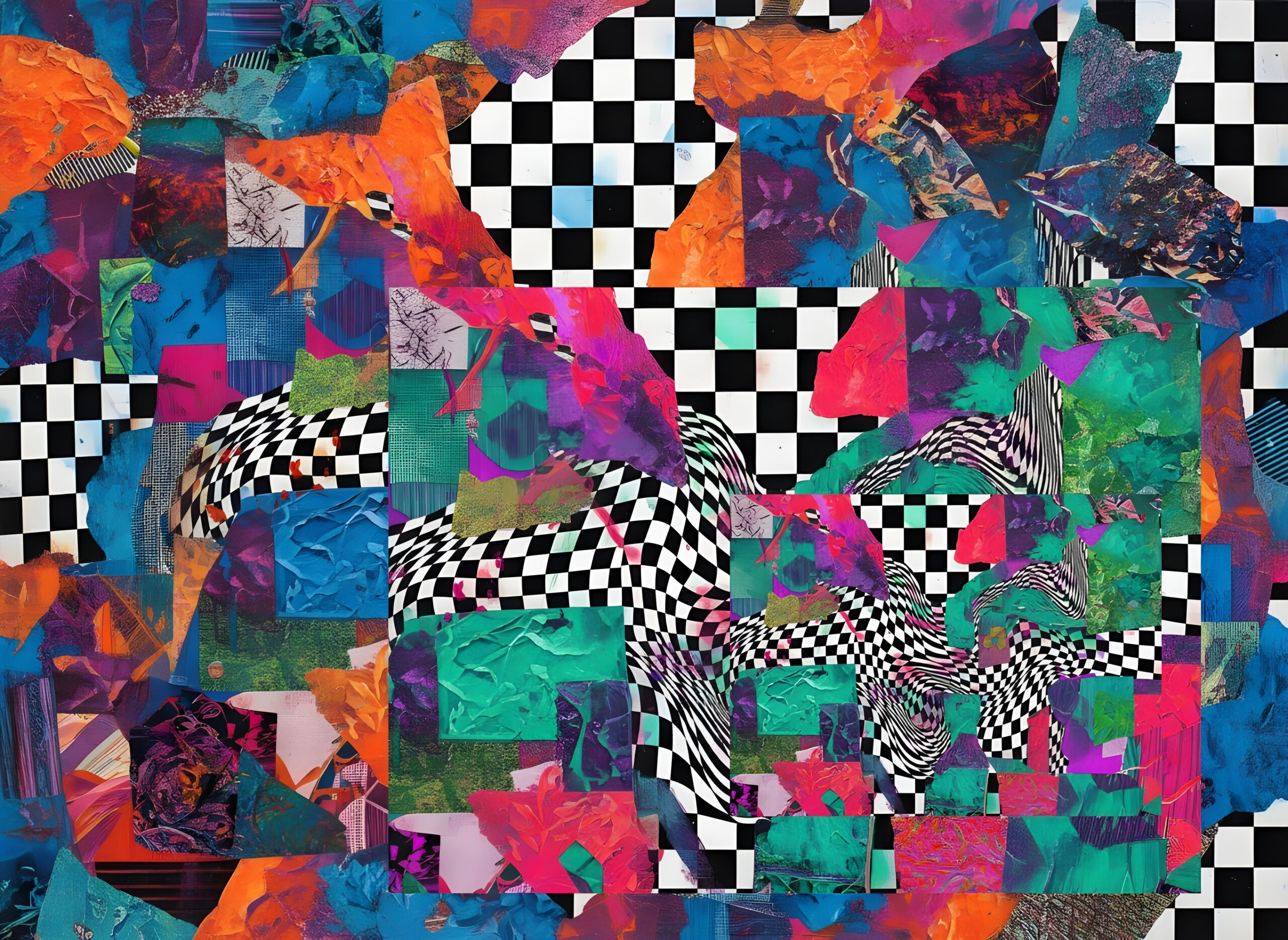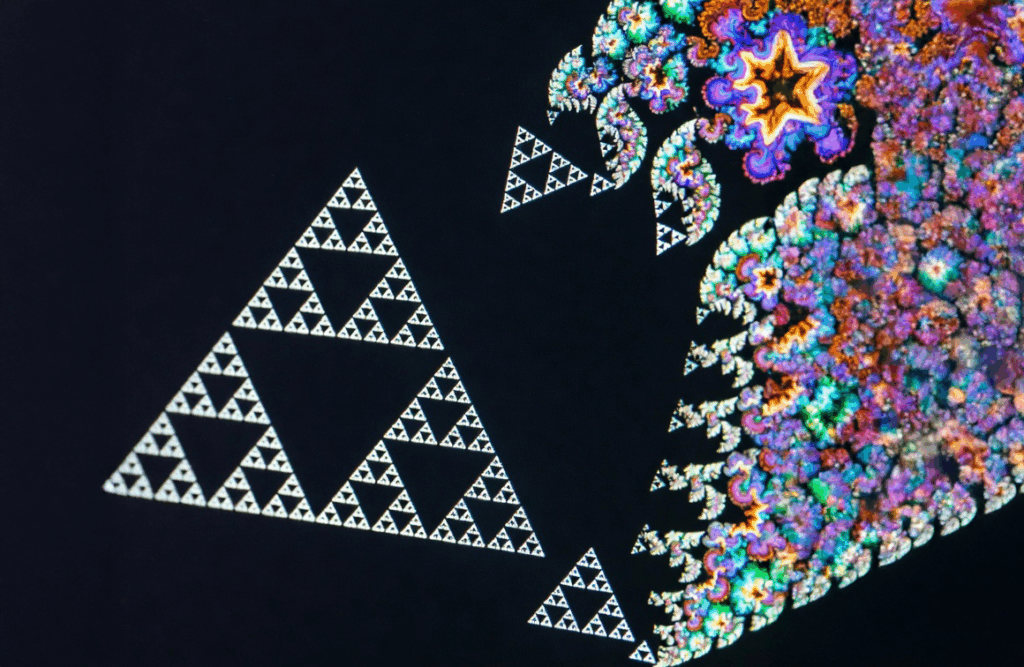Dissection: Geometric Intricacies and Ancient Symbology in “The Lack of a Single Object of Focus Replaced by Three Layers of Partial Self Recursion”
Max Osiris, a Los Angeles-based entrepreneur-turned-digital visionary, has long positioned himself at the vanguard of crypto art, minting works on platforms like SuperRare since 2018. His oeuvre draws from a wellspring of personal self administered art therapy, psychedelic experiences, and transdimensional explorations, often manifesting as surrealist collages that challenge perceptual boundaries. Adopting the moniker “Osiris”—evoking the ancient Egyptian god of resurrection, the afterlife, and cyclical renewal—Osiris infuses his creations with a layered mysticism rooted in resilience and interdimensional abstraction.

This latest 1/1 NFT, “The Lack of a Single Object of Focus Replaced by Three Layers of Partial Self Recursion” (2025), exemplifies this ethos. Priced at 0.2 ETH, the piece is a vibrant digital collage that defies linear interpretation, inviting viewers into a hallucinatory realm where geometry and ancient symbology intertwine to explore themes of fragmentation, duality, and infinite rebirth.
At its core, the work is a chaotic yet meticulously orchestrated mosaic of overlapping fragments, rendered in electric blues, fiery oranges, vivid pinks, deep purples, and lush greens. These hues pulse with psychedelic intensity, reminiscent of altered states induced by substances like mushrooms—experiences Osiris has openly referenced as inspirational, such as his “blasted on mushrooms” encounter with conceptual art installations, especially Starry Night by Van Gogh in Amsterdam and Water Lilies by Degas in Musée de l’Orangerie in Paris. The composition eschews a central focal point, as the title suggests, instead deploying three discernible layers of “partial self-recursion” that create a sense of perpetual unfolding. This recursive structure, where elements mirror and distort themselves incompletely, evokes the mathematical precision of fractals while nodding to ancient sacred geometries that symbolize eternal cycles.
Geometric Foundations: Fragmentation, Distortion, and Recursive Depth
Geometrically, the piece is a symphony of disruption and harmony, built on a foundation of checkerboard motifs that serve as both structural anchors and perceptual traps, all created with the help of Ai’s inherent far superior “understanding” and application of mathematics. Black-and-white checkered patterns recur throughout, often warped into undulating waves or twisted spirals, creating optical illusions of depth and motion.
These checkerboards—classic symbols of duality in Western esotericism, akin to the Masonic floor representing the interplay of light and dark, order and chaos—are fragmented and overlaid with irregular polygons. Triangular shards, evoking pyramidal forms, jut into rectangular blocks and curved stripes, their edges torn and textured as if digitally “painted” with impasto-like strokes, using Ai upscaling algorithms. This fragmentation mirrors Osiris’s transdimensional style, where flat planes fold into implied higher dimensions, suggesting a collapse of Euclidean space into something more quantum and elusive.
The recursion is particularly striking in the mid-layer, where patterns self-reference without full closure: a striped zebra-like form bends into itself, echoing in smaller, distorted iterations nearby, while orange and blue fragments reflect like shattered mirrors. This “partial” quality prevents infinite regress from becoming overwhelming, instead fostering a tension between emergence and dissolution. Mathematically, it recalls the Sierpinski triangle or Mandelbrot set—fractal geometries where self-similarity scales indefinitely—yet Osiris tempers this with asymmetry, ensuring no single object dominates. The overall grid-like composition, divided into irregular tiles, mimics a digital quilt, with colors bleeding across boundaries to blur distinctions between foreground and background. Vibrant contrasts heighten this effect: fiery oranges clash against cool aquamarines, generating a vibrational energy that simulates psychedelic synesthesia, where shapes seem to pulse and breathe.

In terms of spatial dynamics, the layers enact a trompe-l’œil depth. The bottom stratum grounds the piece in organic, earthy greens and blues, suggestive of primordial landscapes; the middle introduces chaotic distortions, like warped checkerboards symbolizing perceptual instability; and the top layer fragments into ethereal pinks and purples, hinting at transcendent realms. This tripartite structure not only embodies the title’s “three layers” but also aligns with geometric principles of perspective in ancient art, such as the isometric projections in Egyptian tomb paintings, where multiple viewpoints coexist without a vanishing point.
Ancient Symbology: Echoes of Osiris, Pyramids, and Eternal Cycles
Delving into the symbology, the piece resonates profoundly with ancient motifs, particularly those from Egyptian cosmology, amplified by the artist’s chosen name. Osiris, the mythic deity dismembered and resurrected by Isis, embodies fragmentation and renewal—a narrative mirrored in the collage’s torn fragments that reassemble into recursive wholes. The triangular elements, scattered like pyramidal debris, evoke the Giza pyramids, structures symbolizing ascension to the afterlife and the pharaoh’s eternal journey.

Viewer interpretations, as noted in initial responses, align with this: one collector saw “Giza and the Nile,” underscoring the piece’s capacity to conjure ancient landscapes amid abstraction. These triangles aren’t mere shapes; they carry the weight of sacred geometry, where the pyramid represents the golden ratio (phi ≈ 1.618), a proportion believed by ancients like the Egyptians and Greeks to encode divine harmony and infinite progression—much like the work’s recursive layers.
The checkerboard, while modern in its optical art connotations (think Victor Vasarely’s op-art illusions), traces back to ancient dualistic symbols. In Egyptian lore, black and white denoted the fertile Nile soil versus the barren desert, or life versus death—parallels to Osiris’s resurrection cycle. This duality permeates the piece, with contrasting colors and patterns suggesting a chessboard of existence, where opposing forces (order/chaos, material/spiritual) engage in eternal play. Psychedelic influences amplify this: the vibrant, hallucinatory palette recalls entheogenic visions in ancient rituals, such as those involving blue lotus in Egyptian ceremonies or psilocybin in Mesoamerican cultures, where geometric fractals manifest as portals to other realms. Osiris’s art therapy roots—channeling personal resilience through abstraction—infuse these symbols with contemporary relevance, transforming ancient archetypes into tools for psychological integration.
Broader esoteric threads emerge: the recursion evokes the Ouroboros, the self-devouring serpent symbolizing cyclical eternity in Egyptian and alchemical traditions. Partial self-recursion here implies incomplete cycles, perhaps commenting on modern fragmentation—digital lives fractured by screens and data—yet hinting at potential rebirth. Transdimensional aspects, a hallmark of Osiris’s surrealist pop art, suggest influences from ancient multidimensional cosmologies, like the Egyptian Duat (underworld) with its layered realms, or Platonic solids in Greek geometry representing elemental realities.
Synthesis and Significance: A Portal to Transcendence
In synthesizing geometry and symbology, Osiris crafts a visual mantra that defies singular focus, compelling the viewer to navigate its layers as one might meditate on a mandala. The geometrics—fragmented yet recursive—serve as vehicles for ancient symbols, bridging Egyptian resurrection myths with psychedelic transdimensionality. This isn’t mere abstraction; it’s a resilient assertion of multiplicity in an era of oversimplification, rooted in Osiris’s journey from law school dropout to crypto art pioneer.
Ultimately, “The Lack of a Single Object of Focus Replaced by Three Layers of Partial Self Recursion” stands as a high-water mark in digital collage, where ancient wisdom recurs in pixelated form, assissted at multiple levels by generative Ai models. It challenges us to embrace perceptual ambiguity, finding unity in duality and infinity in the partial—much like Osiris himself, reborn through art amid personal and cultural chaos. For collectors and scholars alike, it offers not just an NFT, but a gateway to deeper existential inquiry.
https://superrare.com/artwork/eth/0xb932a70A57673d89f4acfFBE830E8ed7f75Fb9e0/53687


Leave a Reply